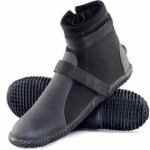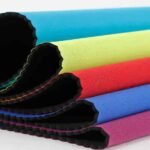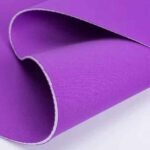Have you ever struggled to keep your neoprene seat covers looking fresh? The fear of damaging the material or failing to remove stubborn stains can be daunting. These challenges not only cause frustration but can also lead to unnecessary costs. But what if there was a simple, effective way to maintain your neoprene seat covers without the hassle?
Cleaning neoprene seat covers is easier than you think. With the right techniques, you can maintain their appearance and functionality without hassle.
Imagine driving with spotless, fresh-looking seat covers that enhance your car’s interior. Let me guide you through the best practices to keep your neoprene seat covers in top condition.
What Are Neoprene Seat Covers?
Understanding what neoprene seat covers are is the first step in maintaining them properly. But what exactly are they?
Neoprene seat covers are protective coverings made from neoprene material, commonly used in vehicles to safeguard seats from wear, spills, and other damages while adding a stylish touch.
Let me delve deeper into the specifics of neoprene seat covers.
Benefits of Neoprene Material
Durability and Protection
Neoprene is renowned for its durability. It resists tears, abrasions, and impacts, making it an excellent choice for seat covers. This durability ensures that your seat covers last longer, providing sustained protection against daily wear and tear.
Thermal Insulation
Neoprene offers excellent thermal insulation, keeping your seats cool in the summer and warm in the winter. This feature enhances comfort for passengers, regardless of the weather outside.
| Feature | Benefit |
|---|---|
| Durability | Long-lasting protection against damage |
| Thermal Insulation | Maintains seat temperature for comfort |
| Water Resistance | Protects seats from spills and moisture |
| Customizability | Available in various colors and designs |
What is the Downside to Neoprene Seat Covers?
Neoprene seat covers have many advantages, but they also come with some drawbacks. What are the potential downsides?
While neoprene seat covers are highly durable and stylish, they can sometimes be prone to staining and may require more careful maintenance compared to other materials.
Let’s explore these challenges and how to address them.
Addressing Neoprene’s Limitations
Stain Susceptibility
Despite its water-resistant properties, neoprene can still stain, especially with oil-based substances. Regular cleaning is essential to prevent permanent marks.
Maintenance Requirements
Neoprene requires specific cleaning methods to maintain its integrity. Using the wrong cleaning agents or techniques can damage the material, reducing the lifespan of the seat covers.
| Downside | Explanation |
|---|---|
| Stain Susceptibility | Oil-based stains can be difficult to remove |
| Maintenance Requirements | Requires specific cleaning methods |
| Potential Fading | Prolonged exposure to sunlight can fade colors |
When Do You Need to Clean Your Neoprene Seat Covers?
Knowing when to clean your neoprene seat covers is crucial for their longevity. But when is the right time to give them a thorough cleaning?
Regular cleaning of neoprene seat covers is necessary to remove dirt, stains, and prevent odors, ensuring they remain in excellent condition over time.
Let’s identify the key moments when cleaning is essential.
Signs It’s Time to Clean
Visible Stains and Dirt
If you notice any stains or accumulated dirt, it’s time to clean your seat covers. Ignoring these can lead to permanent discoloration and damage.
Unpleasant Odors
Odors can develop from spills, sweat, or mildew. Cleaning helps eliminate these smells, maintaining a fresh environment in your vehicle.
Regular Maintenance Schedule
Establishing a routine cleaning schedule, such as every few months or after significant spills, helps keep your seat covers in top shape.
| Indicator | Action Needed |
|---|---|
| Visible Stains | Perform spot cleaning immediately |
| Unpleasant Odors | Use odor-neutralizing cleaning solutions |
| Regular Maintenance | Schedule routine cleanings regularly |
What is the Best Thing to Clean Neoprene With?
Choosing the right cleaning agents is vital for maintaining neoprene seat covers. But what is the best thing to use?
The best cleaning agents for neoprene seat covers are mild detergents or specialized neoprene cleaners that effectively remove stains without damaging the material.
Let’s explore the most suitable cleaning solutions.
Selecting the Right Cleaners
Mild Detergents
Mild detergents are gentle on neoprene while effectively removing everyday dirt and stains. They are ideal for regular maintenance cleaning.
- Pros: Safe for neoprene, easy to find
- Cons: May require multiple applications for tough stains
Specialized Neoprene Cleaners
These cleaners are specifically formulated to address the unique properties of neoprene, providing deeper cleaning for stubborn stains and preserving the material’s integrity.
- Pros: Highly effective on tough stains, preserves neoprene properties
- Cons: Can be more expensive than regular detergents
| Cleaner Type | Best For |
|---|---|
| Mild Detergents | Regular maintenance and light stains |
| Specialized Neoprene Cleaners | Deep cleaning and stubborn stains |
| Avoid Harsh Chemicals | Prevent damage and degradation of neoprene |
How Do You Clean Neoprene Covers?
Cleaning neoprene seat covers properly ensures they remain functional and aesthetically pleasing. But how do you clean them effectively?
Cleaning neoprene covers involves a combination of gentle washing, targeted stain removal, and proper drying techniques to maintain their appearance and durability.
Let me guide you through the step-by-step cleaning process.
Comprehensive Cleaning Steps
Step 1: Preparation
Before cleaning, remove the seat covers from the seats. Shake off any loose dirt and debris to make the cleaning process more effective.
Step 2: Spot Cleaning
Treat any visible stains with a mild detergent or specialized cleaner. Gently scrub the area with a soft brush to lift the stain without damaging the material.
Step 3: Washing
For a thorough clean, wash the seat covers either by hand or using a washing machine on a gentle cycle with cold water. Ensure all detergent is rinsed out to prevent residue buildup.
Step 4: Drying
Allow the seat covers to air dry in a shaded area. Avoid direct sunlight and heat sources to prevent material degradation and color fading.
| Cleaning Step | Description |
|---|---|
| Preparation | Remove covers and shake off loose dirt |
| Spot Cleaning | Treat stains with mild detergent |
| Washing | Hand wash or machine wash on gentle cycle |
| Drying | Air dry in a shaded area |
How Do You Remove Oil-Based Stains from Neoprene Seat Covers?
Oil-based stains are some of the toughest to remove from neoprene seat covers. How can you effectively tackle these stubborn marks?
Removing oil-based stains from neoprene seat covers requires targeted treatments such as baking soda paste or specialized cleaners to break down the oil without harming the material.
Let’s explore effective methods to eliminate these persistent stains.
Effective Oil-Based Stain Removal Techniques
Baking Soda Paste
Creating a paste with baking soda and water can help absorb and break down oil stains. Apply the paste to the stain, let it sit for 15 minutes, then gently scrub with a soft brush.
Specialized Oil Stain Removers
There are cleaners specifically designed to tackle oil-based stains on neoprene. These products penetrate the material to remove the oil without causing damage.
- Application: Follow the manufacturer’s instructions for the best results.
- Precautions: Test the cleaner on a small, inconspicuous area first to ensure it doesn’t affect the color or texture.
| Method | Steps | Tips |
|---|---|---|
| Baking Soda Paste | Apply, let sit, scrub gently | Use a soft brush to avoid scratches |
| Specialized Cleaners | Apply as per instructions, rinse thoroughly | Always test on a small area first |
Preventative Measures
To avoid future oil-based stains, consider using protective sprays designed for neoprene. These sprays create a barrier that repels oils and other liquids, making spills easier to clean.
What Regular Maintenance Steps Should Be Taken to Keep Neoprene Seat Covers Clean?
Regular maintenance is key to keeping your neoprene seat covers in pristine condition. But what steps should you take consistently?
Implementing regular maintenance steps such as routine cleaning, immediate stain treatment, and periodic inspections can significantly extend the life and appearance of your neoprene seat covers.
Let me outline the essential maintenance practices.
Routine Maintenance Practices
Routine Cleaning
Clean your seat covers regularly to prevent dirt buildup. This can be done monthly or as needed, depending on usage and exposure to elements.
Immediate Stain Treatment
Address spills and stains immediately to prevent them from setting. Blot the area with a clean cloth and apply a mild detergent or specialized cleaner promptly.
Periodic Inspections
Check your seat covers periodically for signs of wear, tear, or fading. Early detection of issues allows for timely repairs or replacements, maintaining the overall quality.
Key Maintenance Steps
| Maintenance Step | Frequency | Benefit |
|---|---|---|
| Routine Cleaning | Monthly or as needed | Prevents dirt buildup and stains |
| Immediate Stain Treatment | As needed | Prevents permanent staining |
| Periodic Inspections | Quarterly | Early detection of damage or wear |
Can You Wash Neoprene Seat Covers in a Washing Machine?
Using a washing machine can be a convenient way to clean neoprene seat covers, but is it safe? Can you wash them in a washing machine?
Yes, you can wash neoprene seat covers in a washing machine, provided you use a gentle cycle with cold water and avoid harsh detergents to prevent damage.
Let’s examine the best practices for machine washing neoprene.
Machine Washing Guidelines
Preparing for Machine Wash
Before placing the seat covers in the washing machine, ensure they are free from loose debris. Shake them out and, if possible, use a mesh laundry bag to protect them during the wash cycle.
Selecting the Right Cycle
Choose a gentle or delicate cycle with cold water. Avoid hot water as it can cause neoprene to shrink or lose its elasticity.
Detergent Choice
Use a mild detergent that is free from bleach or harsh chemicals. Specialized neoprene cleaners can also be used for a more thorough clean.
Drying After Machine Wash
After washing, remove the seat covers promptly and air dry them in a shaded area. Avoid wringing or twisting the material to maintain its shape.
| Machine Washing Step | Instructions | Tips |
|---|---|---|
| Preparation | Remove debris, use mesh laundry bag | Shake off loose dirt before washing |
| Cycle Selection | Gentle or delicate cycle with cold water | Avoid hot water to prevent shrinkage |
| Detergent Choice | Mild detergent or specialized neoprene cleaner | Ensure detergent is free from bleach |
| Drying | Air dry in shaded area | Do not wring or twist neoprene covers |
Conclusion
Maintaining clean neoprene seat covers doesn’t have to be a daunting task. By following the right cleaning methods and knowing when to seek professional help, you can keep your seat covers looking great and functioning well for years. At Szoneier, we specialize in high-quality neoprene products that are durable, customizable, and designed to meet your specific needs. Our 12 advanced production lines ensure that we can handle bulk orders efficiently, providing you with reliable and top-notch products. Whether you’re a brand owner, wholesaler, or retailer, partnering with us means you get the best in quality and service.











